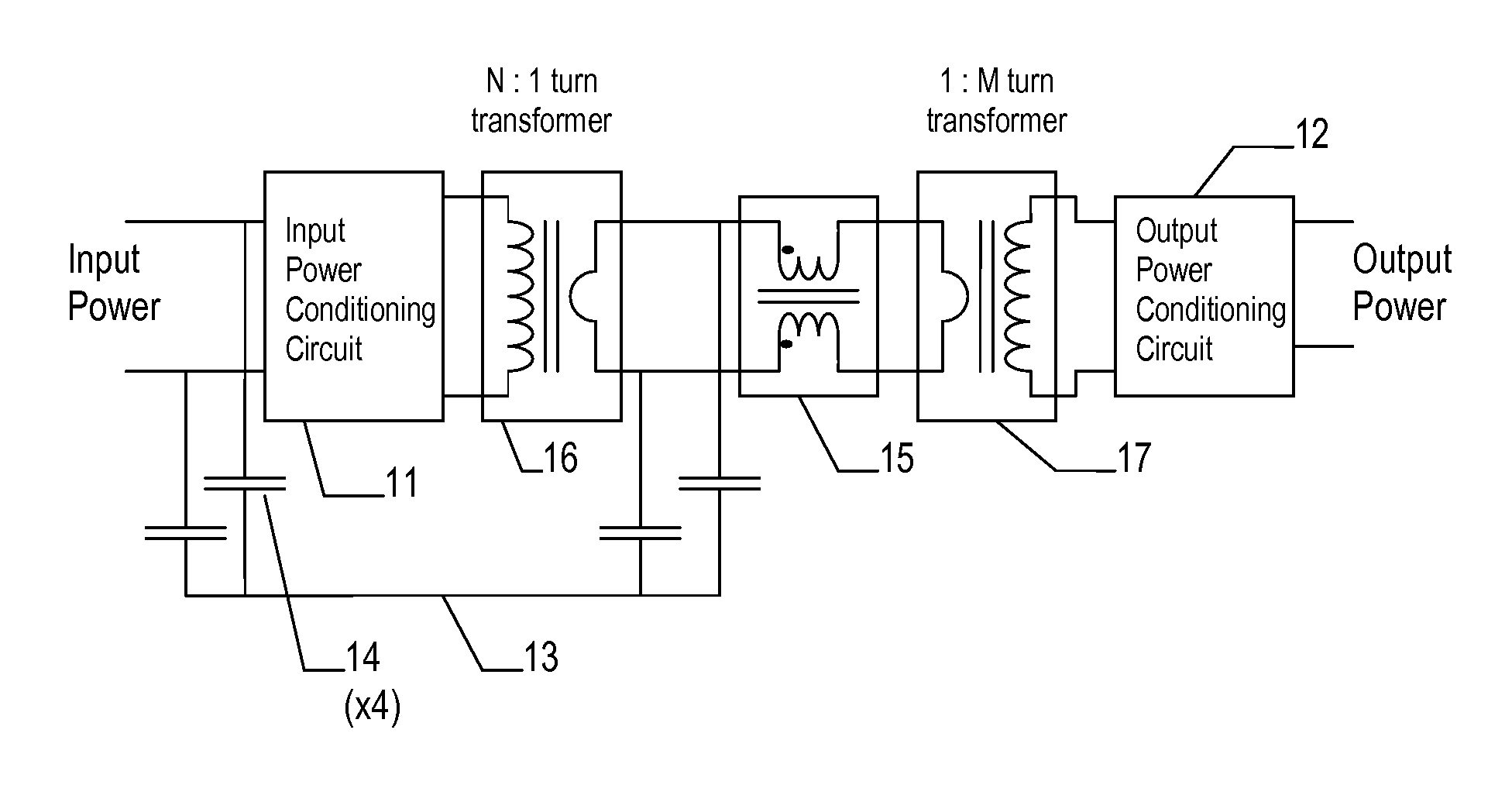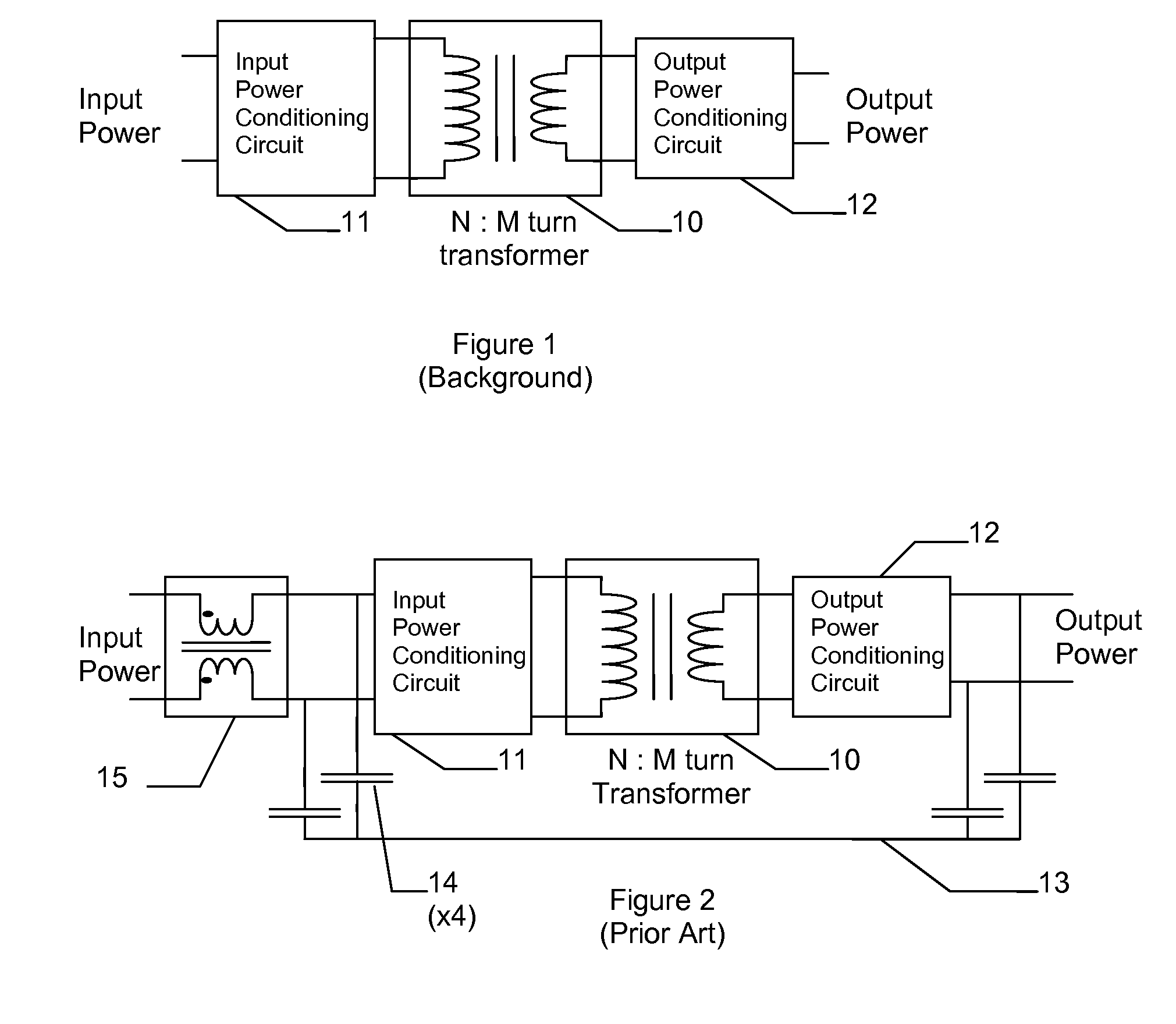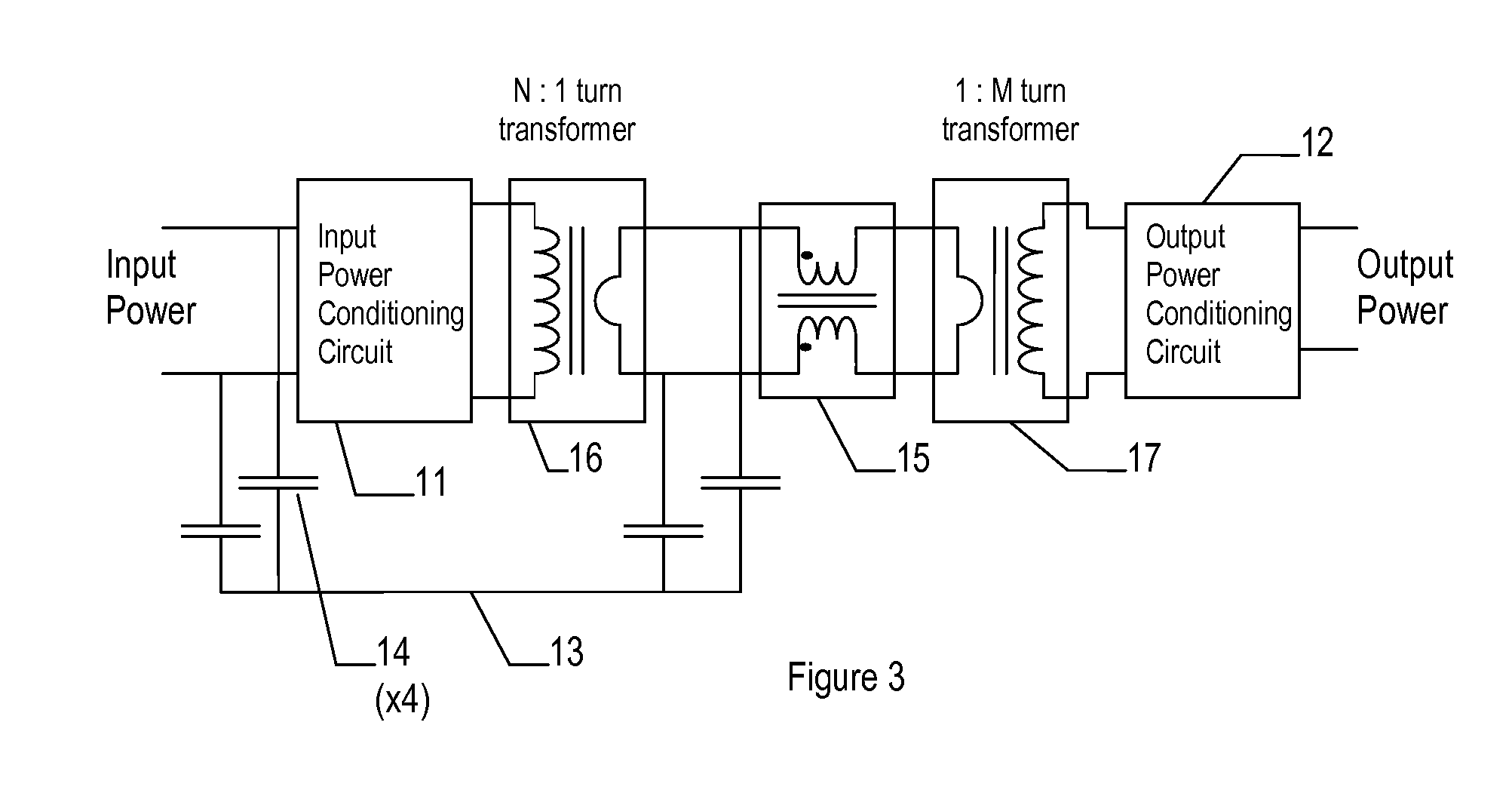Method of Reducing Common Mode Current Noise in Power Conversion Applications
a power conversion and common mode current technology, applied in the direction of power conversion systems, oscillation generators, pulse techniques, etc., can solve the problems of noise current flow, more problematic parasitic capacitance between the windings of the transformer, and common mode noise current, so as to reduce the isolation performance of the input side
- Summary
- Abstract
- Description
- Claims
- Application Information
AI Technical Summary
Benefits of technology
Problems solved by technology
Method used
Image
Examples
Embodiment Construction
[0028]Common mode current noise filtering is a recognized as an essential element of compliance with regulatory requirements of electronic equipment. Filters similar in design to the prior art shown in FIG. 2 are especially common in systems containing isolated dc-dc power conversion circuits.
[0029]There are isolated power conversion applications, however, that can not tolerate the decrease in low frequency isolation inherent with these filters. The object of the present invention is to provide exceptional common mode current noise filtering and
[0030]In relation to the prior art of FIG. 2, and in accordance with the present invention, a nominal isolation transformer 10 is separated into two transformers which would perform similar power conversion function, taking additional losses, if any, into account, if connected in series. In transformer terms, replacing an N:M turns ratio nominal transformer would require a N:1 turns ratio transformer and a 1:M turns ratio transformer. This ar...
PUM
 Login to View More
Login to View More Abstract
Description
Claims
Application Information
 Login to View More
Login to View More - R&D
- Intellectual Property
- Life Sciences
- Materials
- Tech Scout
- Unparalleled Data Quality
- Higher Quality Content
- 60% Fewer Hallucinations
Browse by: Latest US Patents, China's latest patents, Technical Efficacy Thesaurus, Application Domain, Technology Topic, Popular Technical Reports.
© 2025 PatSnap. All rights reserved.Legal|Privacy policy|Modern Slavery Act Transparency Statement|Sitemap|About US| Contact US: help@patsnap.com



